Welcome, Commander players! This primer is on the basics of playing Selesnya in Commander, and is part of a ten-part series that covers all of Magic’s two-color pairs. In this series, we go through the strengths and weaknesses of each color pair, as well as common play styles. You can read our other primers so far: Boros, Izzet, Golgari, Rakdos.
The Selesnya Conclave prizes unity, harmony, and a connection with the natural world. It’s a blend of the strength and vitality of green, with the order and justice of white. Selesnya decks are not short on tools for their players, and usually establish a game plan through powerful nonland permanents.
Strengths
Selesnya is a decidedly powerful color pair in the format. It brings format staples like Mirari’s Wake, Eladamri’s Call, and Aura Shards to the table. Despite the power of its multicolored cards, a large chunk of this power comes from how well Green & White cards work together.
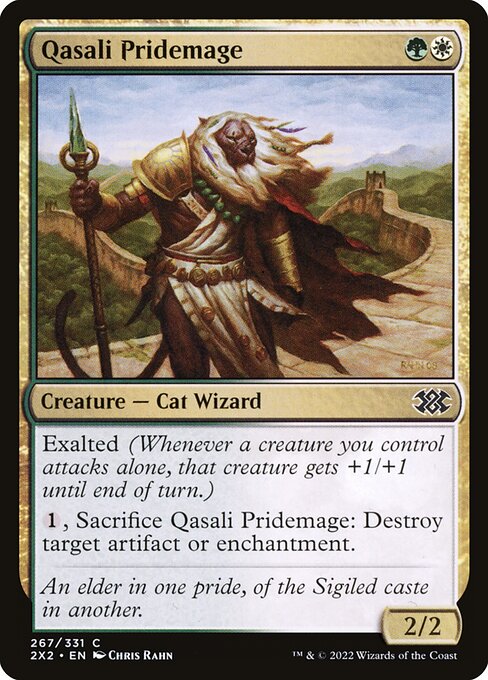
Single Target Removal: Commander employs a ton of powerful artifacts and enchantments, so decks can live and die by their ability to answer them. Selesnya excels here, with popular answers like Knight of Autumn, Qasali Pridemage, and Aura Shards. The removal is so good that Nature’s Chant rarely makes the cut. Krosan Grip is a format staple for green, since it is essentially uncounterable. For removing cards like Kruphix, God of Horizons, an exile effect like Return to Dust is needed—that generally means white mana, though Sylvan Reclamation and Fade into Antiquity offer a small amount of exiling with green mana.
Other non-creature permanents like Maze of Ith or Narset, Parter of Veils can be removed with Beast Within or Generous Gift. I recommend putting at least one of those two options into your Selesnya deck, for when you absolutely have to put that Jace, Wielder of Mysteries out to pasture.
As for creature removal, white has the upper hand. Green can remove creatures through fight effects like Prey Upon or Master of the Willd Hunt, but those options are usually unnecessary when you can play Swords to Plowshares and Path to Exile. It’s worth remembering with the influx of enchantment creatures through Theros Beyond Death: Krosan Grip can take out Courser of Kruphix and the like.
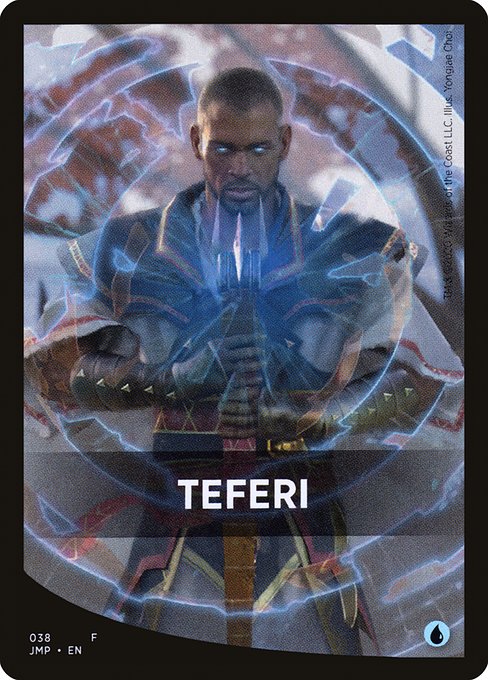
Resiliency: In recent years, Selesnya decks have received some boosts to be more resilient, thanks to new cards that help circumvent board wipes and removal. While there are only a handful that experience widespread play, they have enough impact to consider this a real strength of Selesnya. It’s not unusual for a card like Heroic Intervention to change the tide of a game, keeping your board intact while other players suffer. Selesnya can play Teferi’s Protection, Heroic Intervention, Eerie Interlude, and even Wrap in Vigor.
If things go well for you, though, you may not even need these tricks. Avacyn, Angel of Hope, Sigarda, Heron’s Grace, and Shalai, Voice of Plenty can provide a safety blanket for your board. You might not want to run all of them at once, but there are a variety of options to fit your budget. Selesnya decks tend to commit their resources to the board, so these cards provide valuable resilience.
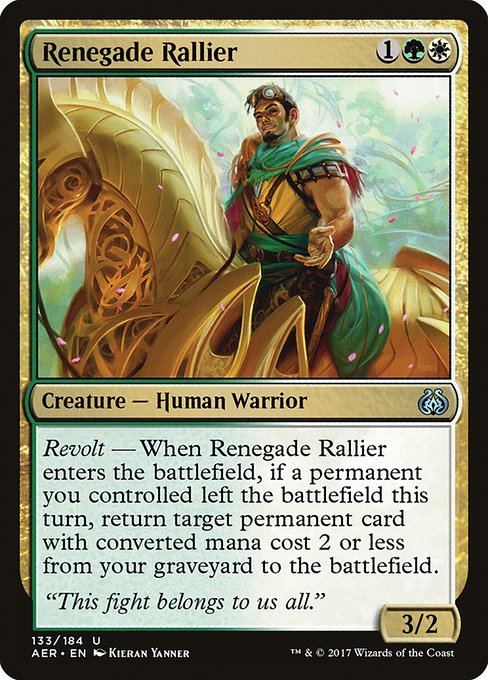
Recursion: There are only a handful of multicolored cards in Selesnya that allow us to get things back from the graveyard. Renegade Rallier and Saffi Eriksdotter allow for graveyard recursion, but the list ends shortly after that. However, there are a variety of recursion spells available when we delve into the monocolor options.
Green generally focuses around getting permanents back to hand, and they’ll look towards options like Creeping Renaissance, Life from the Loam, and Seasons Past. White puts the emphasis on bringing things back to the battlefield, with splashy effects like Open the Vaults, Return to the Ranks, and Rally the Ancestors. Kristen’s article on getting more recursion with Boros touches base on some of the strength that white has to work with the graveyard. Karmic Guide is a blinkable reanimator tool, so every Charming Prince or Felidar Guardian you cast can get a creature back from the graveyard.
While not as commonly-played, there are enchantment-based recursion engines also available to the Selesnya player. Sigil of the New Dawn is a means of buying back valuable creatures, such as Sakura-Tribe Elder or Reveillark. Holistic Wisdom offers a unique ability to get back your best answer that’s currently in the graveyard.
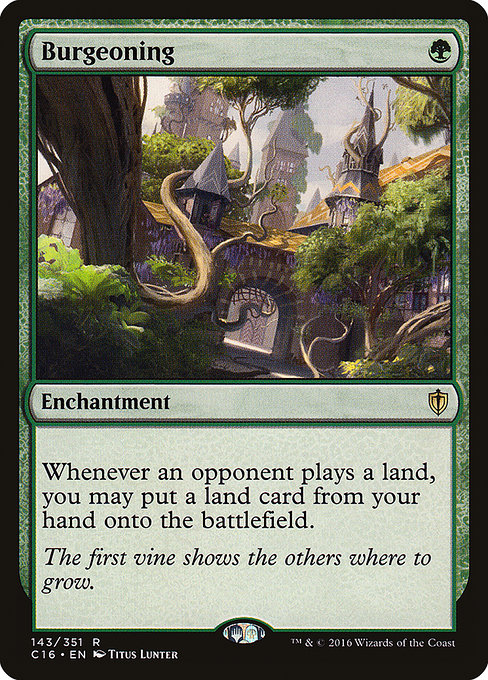
Ramp: Green obviously offers powerful ramp, but white has recently gotten an extra push. Smothering Tithe was the breakout hit for 2019, and arguably offers more of an impact on ramp than most other four-mana ramp spells in green. Land Tax and Weathered Wayfarer don’t offer mana ramp per se, but they ensure that the Selesnya player can hit repeated land drops, especially if they’re playing Burgeoning or Rites of Flourishing.
Some of our usual suspects will be Cultivate and Sakura-Tribe Elder, since two and three-mana spells are easy to cast off of your opening hand. Dryad of the Ilysian Grove and Nyxbloom Ancient are new options, and will find their way into plenty of lists. What ramp tools you choose will depend on your deck’s strategy, but for a good primer on the green ones, check out this article from Dana Roach on EDHrec. Outside of the usual suite of green spells, Mirari’s Wake is another option that’s available to Selesnya players. This card both doubles the amount of mana you have access to, as well as provide some extra closing power to your creatures on board.
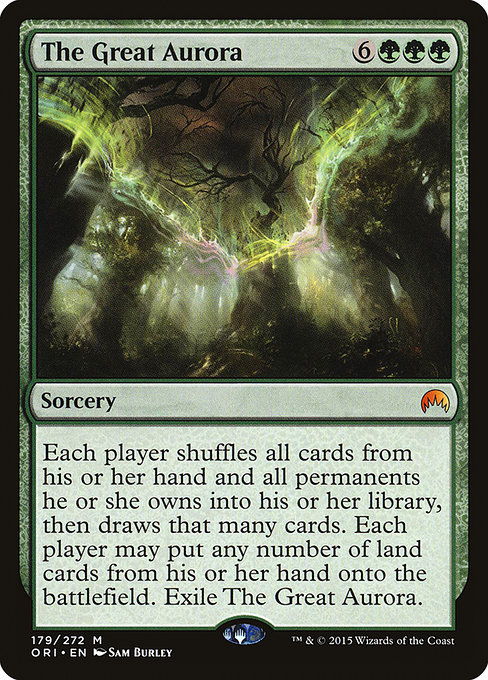
Board Wipes: Outside of Fracturing Gust, there are no ubiquitous board wipes that are green-white. However, there are a litany of monowhite options to choose from, and board wipes that can fit any player’s strategy. Austere Command, Bane of Progress, and Wrath of God are three format staples, but there are new tools coming out each set that fill in the gaps.
To answer indestructible or hexproof permanents, Play of the Game, The Great Aurora, and Winds of Abandon are all strong options. While these big, splashy spells can be expensive to cast, Selesnya has no shortage of mana ramp to make it happen. When coupled with Selesnya’s ability to recover from board wipes, or insulate themselves from the damage that they reap, Selesnya is no stranger to the reset button.
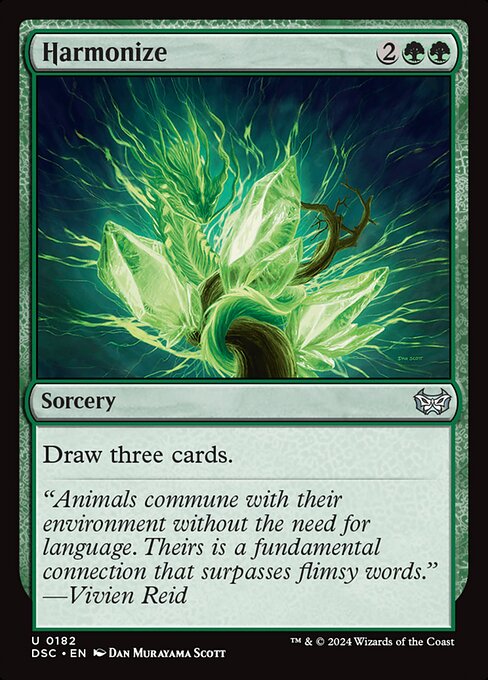
Card Draw and Selection: White does not offer much for card draw, but green has an abundance of options to choose from. Sylvan Library and Mirri’s Guile are old classics that offer card selection. For more budget-minded builders, there are cards like Harmonize or Rishkar’s Expertise. Camaraderie is a recent addition to Selesnya specifically that offers potentially large draws for token strategies.
When looking to draw cards in green, it pays to closely tailor those spells to how the deck wants to operate. For instance, decks that play big creatures may look at cards like Elemental Bond or Return of the Wildspeaker. If you’re playing with a lot of creatures out at once, like in token decks, then Shamanic Revelation, Camaraderie, or Collective Unconscious will be better. Cards like Guardian Project, Beast Whisperer, and Argothian Enchantress turn each of your creatures and enchantments into card draw, allowing you to cantrip off of each one. While these spells are usually sorcery-speed, or check for specific permanents on the battlefield, they’ll make sure that Selesnya players aren’t left in the dust.
Selesnya’s strength lies even more with direct tutoring. Artifacts and Enchantments are easy to search for in decks with white cards like Enlightened Tutor, Idyllic Tutor, or Open the Armory. Green favors searching for creatures, and can employ the likes of Worldly Tutor, Birthing Pod, and Green Sun’s Zenith, to name a few. Captain Sisay grabs anything legendary, and Eladamri’s Call can get whichever creature you need at that exact moment.
If you’re going to play Congregation at Dawn though, I recommend searching for no more than one creature, or two if you have a Howling Mine effect out. Commander games can vary wildly over the course of a few turns, so you don’t want to be locked into drawing creatures that are no longer relevant. All in all, these tutors allow you to treat your deck like a toolbox, and pack a variety of cards that can be grabbed, to better adapt to game scenarios.
Weaknesses
Reliance on Creatures: Selesnya decks rely heavily on creatures. For most card draw spells, as we discussed before, you need a creature or ten. Even for enchantment-heavy decks, five of the six cards that draw cards when you play enchantments are creatures. And in Commander, creatures are fragile. Every deck is packing creature removal, which creates cracks in your armor that can be exploited.
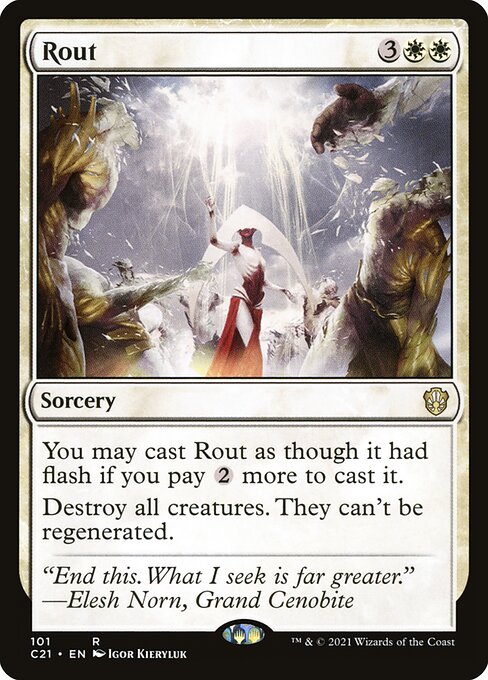
If you cast Rishkar’s Expertise with only one creature out, and an opponent responds by destroying your creature with Doom Blade, then you won’t draw cards off of that six-mana spell. That can lead for some big blowouts as you try to keep up with the pace of play. Additionally, something like Rout can be cast in response to Shamanic Revelation, causing the Selesnya player to not only lose their creatures, but also their way of rebuilding their hand. Plays like that can leave a Selesnya player out for good, when the table is making the transition from the middle to the late game.
Win Conditions: Selesnya frequently wins through combat damage, using cards like Craterhoof Behemoth, Pathbreaker Ibex, and Cathars’ Crusade. They do this because there aren’t many other ways to win in this color pair. Granted, there are a few ways to assemble combos that get there through unconventional means. For instance, Melira, Sylvok Outcast plus Kitchen Finksand Altar of Dementia allow you to gain a massive amount of life while milling your opponents out.
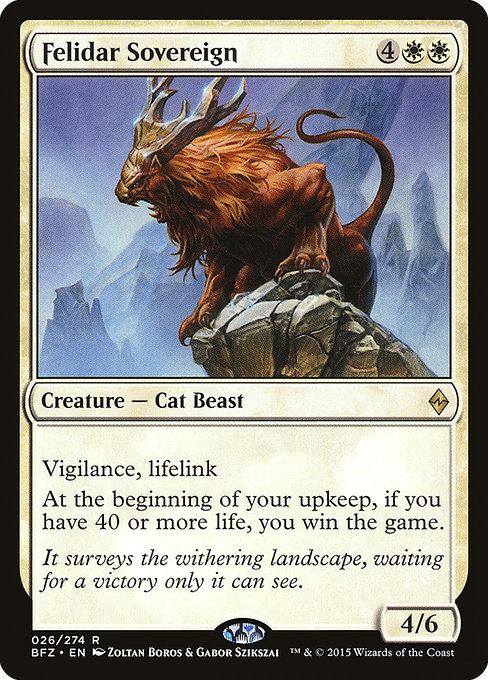
In the realm of lifegain payoffs, Felidar Sovereign, Test of Endurance, and Aetherflux Reservoir can close out the game. In spite of this, though, other Selesnya cards that say “You win the game” on them are quite narrow. While it may feel good to win off of Epic Struggle or Helix Pinnacle, the alternative win conditions lack in breadth over what the Selesnya deck wants to do. Selesnya doesn’t have something like Revel in Riches or Laboratory Maniac, so trying to win off of something else can present its own challenges.
When looking at some commonly-played Selesnya Commanders that don’t rely on combat damage, the list gets fairly short. Selvala, Explorer Returned offers some combo potential through infinite mana or infinite untaps of Selvala. Captain Sisay can be built in such a way that allows you to tutor up lock pieces to grind a game to a halt. Otherwise, Selesnya is still on the hunt for some unorthodox commanders here. Fans of Saffi Eriksdotter can rise to the challenge.
Common Commanders and Archetypes
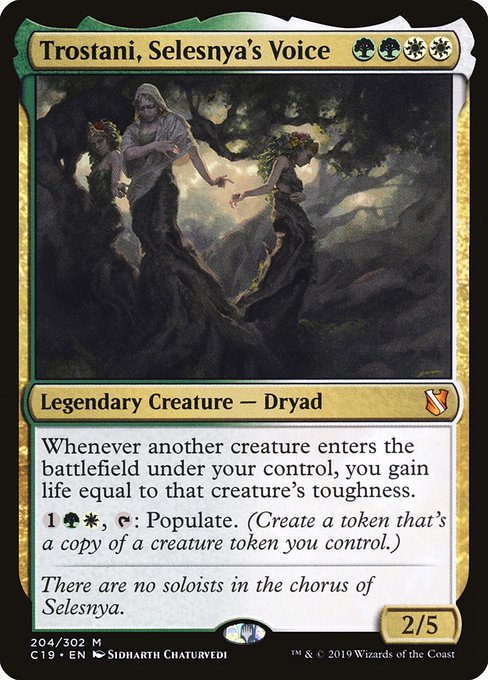
Tokens: Tokens are arguably what Selesnya is most known for. Doubling Season, Anointed Procession, and Parallel Lives are common in these decks, with the Trostani, Selesnya’s Voice, Emmara, Soul of the Accord, or Rhys the Redeemed at the helm. As soon as you see Beastmaster Ascension, it’s time to get worried.
Auras/Equipment: Sigarda, Host of Herons has long been the Selesnya mainstay of this archetype, allowing for a bunch of different build options. Nazahn, Revered Bladesmith favors equipment-heavy builds. Newcomer Siona, Captain of the Pyleas prefers auras and has a built-in protection against edict effects. You can read more about Siona here.
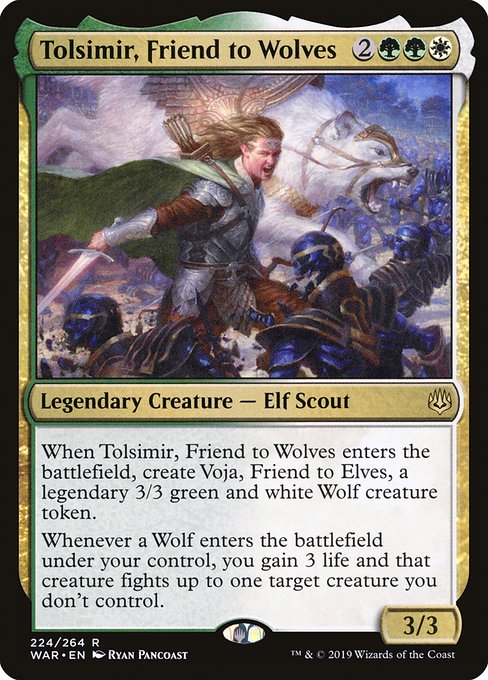
Tribal: Wolf tribal fans will like both versions of Tolsimir, whereas cat lovers prefer Arahbo, Roar of the World. Sigarda, Heron’s Grace provides a safety net for humans, and Selvala, Explorer Returned can pair well with big mana elf strategies. Captain Sisay offers a unique angle to build on, allowing you to tutor through playing “legendary tribal.”
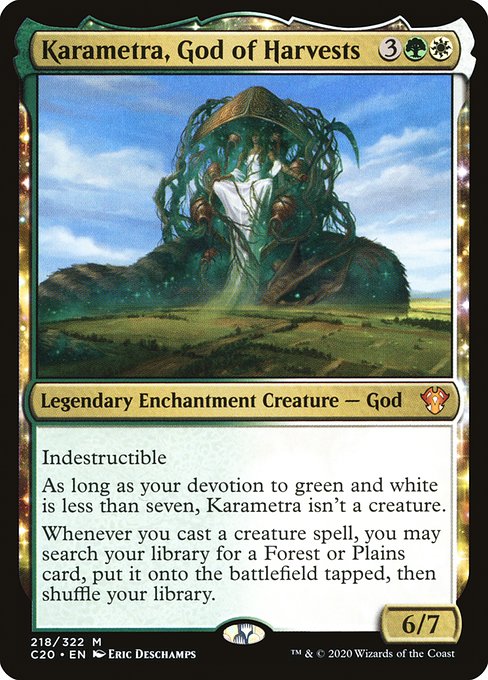
Enchantments: While she doesn’t distinctly reference enchantments in her text box, Karametra, God of Harvests is a popular commander for enchantment-heavy decks. To see an awesome Karametra deck in action, watch this popular episode of Game Knights by The Command Zone Podcast. Former pro and Wizards of the Coast R&D star Melissa DeTora pilots a powerful take on the archetype.
Other Oddities: As mentioned before, Selvala, Explorer Returned can create some powerful infinite combos. Shalai, Voice of Plenty can manipulate +1/+1 counters. Gaddock Teeg can be an arduous deck to play against, since he shuts off many of the format’s game-breaking non-creature spells.
Final Take
Selesnya offers some sizable power in Commander, but has a heavy reliance on creatures. It has great removal, formidable board wipes, and many ways to keep up with the rest of the table. Its reliance on winning through combat damage poses some noticeable deck building restrictions, but it’s an otherwise flexible choice for your next Commander night.
Thanks for reading this edition of the guild primer; we’ll be back for more soon!
Travis is a Connecticut-based player and writer, who has been turning things sideways since Starter 1999. He primarily plays Commander, Pauper, and Modern, and has a passion for introducing new players to the game. When he isn’t attacking with red creatures, he can be found mountain biking or playing the guitar. You can follow his exploits here on Twitter and Instagram.

